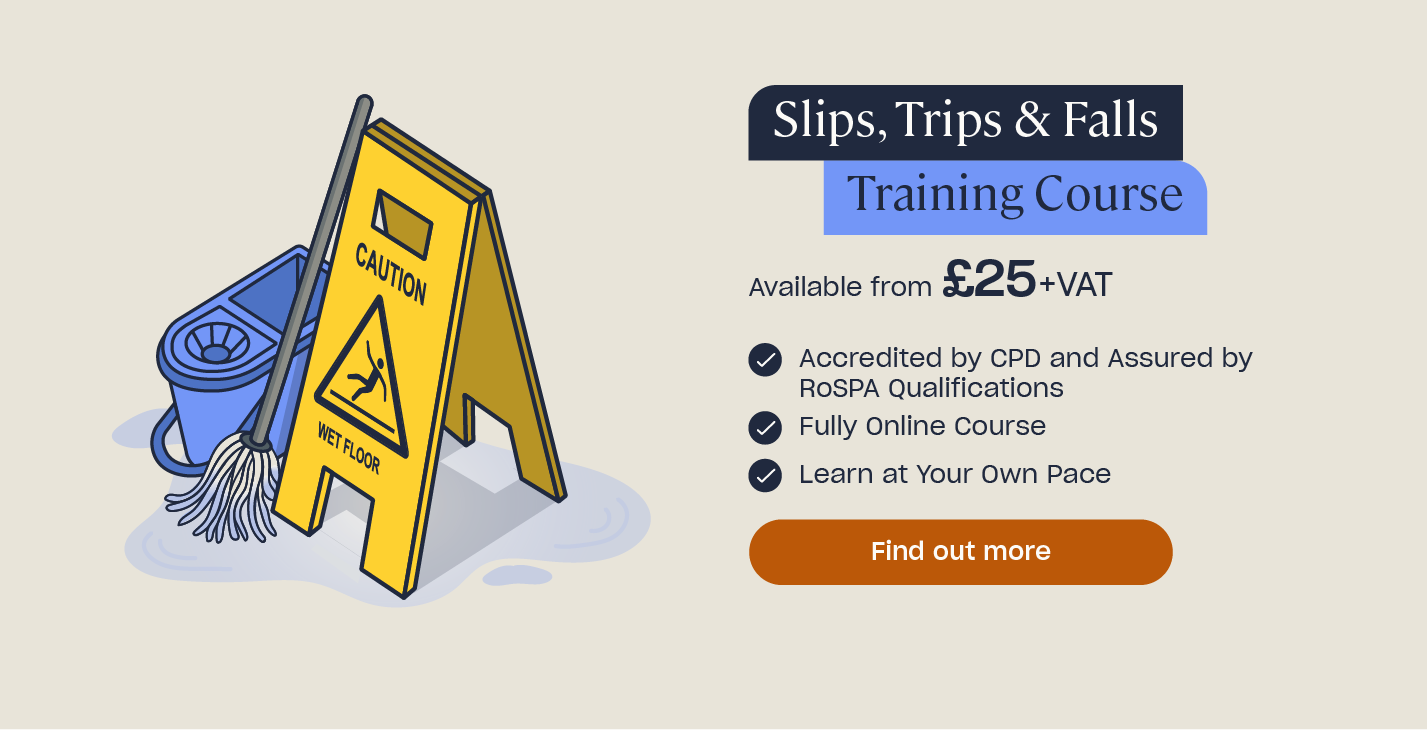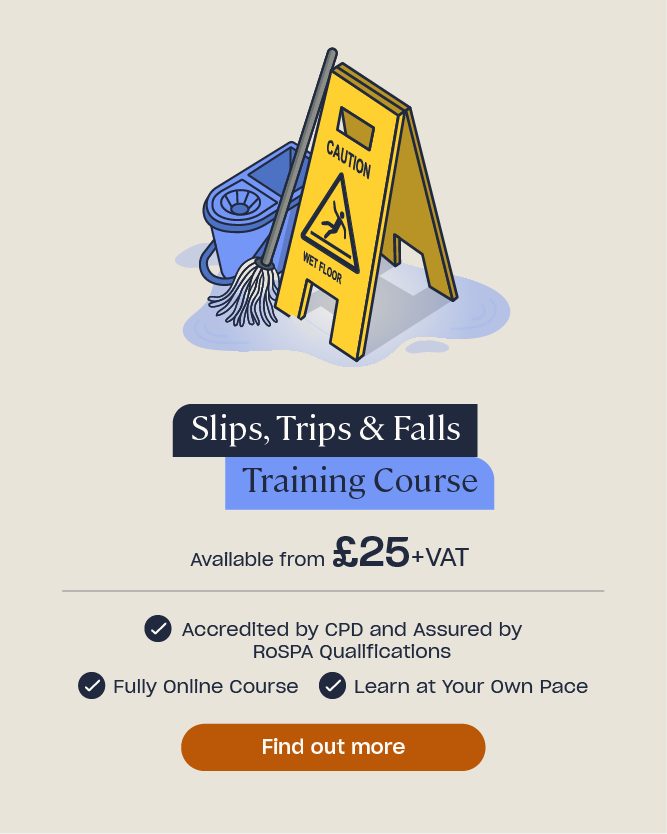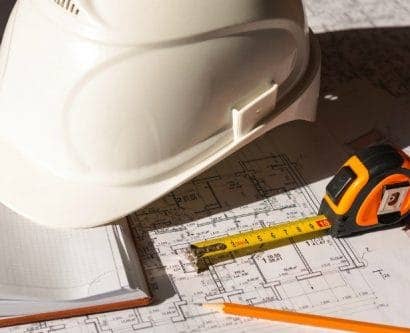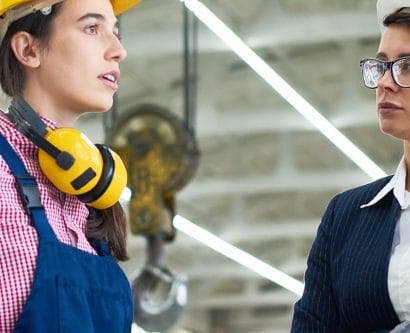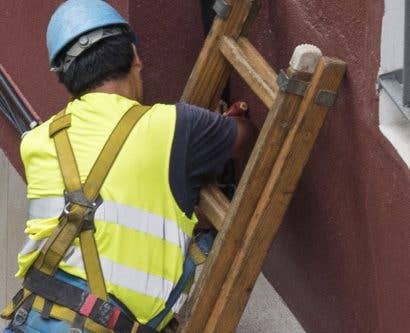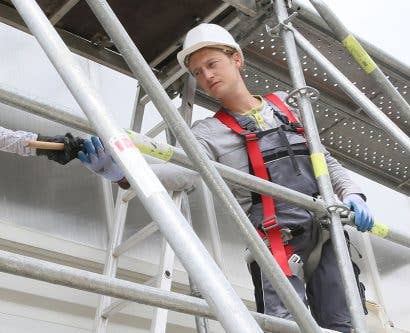Tips for Preventing Slips, Trips, and Falls in the Workplace
The tips contained in this article will give you some useful ideas for preventing slips, trips and falls in your workplace, but if you are looking at implementing control measures across your business then you may want to take our online Slips, Trips & Falls Training Course.
It’s very easy to catch your foot on a stray cable or lose your footing when walking along a wet path, and gravity is everyone’s worst enemy – all it takes is one false step while working at height to find that you’ve fallen and seriously injured yourself.
While it may be hard to believe that something as seemingly innocent as a loose mat or discarded object in a walkway can cause major injuries, the fact remains that slips and trips are the most common causes of work-related injuries every year.
Slips, Trips and Falls Statistics
According to the Health and Safety Executive:
- Slips, trips, and falls accounted for around 32% of employee injuries in 2022/23.
- They are the most common cause of non-fatal workplace injury.
- Falls from height are the most common cause of fatalities.
Statistics don’t exaggerate; these injuries all happened to real people while at work.
Both employers and employees have a duty to protect people’s wellbeing at work. In order to prevent slips, trips, and falls, employers must put in place control measures and procedures for preventing hazards from ever materialising, and it’s down to employees to uphold and follow them.
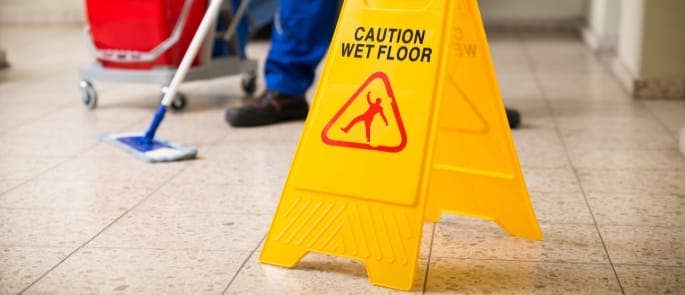
Control Measures to Prevent Slips
Slips occur when a person’s feet cannot make contact with or grip a floor’s surface effectively, and this usually happens because the floor is contaminated with liquids. But other hazards include powder and dust, loose mats, bad footwear, or uneven surfaces.
Hazards may be created by:
- Spillages from drinks or liquids used as part of work activities, e.g. paint.
- Puddles or patches of wetness left behind by cleaning.
- Trails of wetness, leaves, and mud from outside during wet weather.
- Loose mats and rugs.
- Poor flooring.
- Lack of housekeeping.
9 tips for preventing slip hazards:
Working with contaminants: use drip trays when working with liquids to prevent them from spilling on the floor, use lids and fill-lines on containers, and use screens to stop splashes and overspray when using hoses.
Preventing access: carry out cleaning activities after-hours to prevent exposure to wet floors, but if this is not possible restrict access to the area. Also, minimise the amount of people present in areas where contaminants are handled.
Design and use: floors should be made of materials designed to reduce slipping. Only use cleaning equipment specifically designed for that material so you don’t wear down the anti-slip quality.
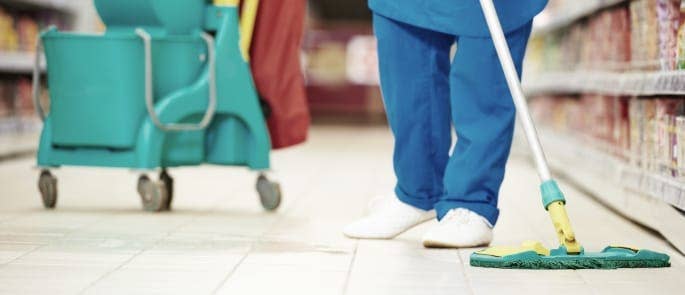
Cleaning activities: do not leave puddles behind, use the correct cleaning materials for the type of floor, and let floors air dry or use a dry mop to speed up drying time if you can’t prevent access to the area. Use wet floor signs.
Footwear: when people work with potential contaminants or in wet or dusty environments, they should wear proper non-slip footwear that is designed for the hazards specific to the work activities.
Good housekeeping: clean up spillages immediately (if it is a chemical spill that you are unable to handle, contact someone qualified immediately). Store liquids in cupboards, and report loose, damaged, and worn flooring or equipment.
Anti-slip equipment: use anti-slip tape, mats, covers, and grating to prevent areas of the premises from becoming slippery and posing a risk to workers, particularly entranceways and stairs.
Wet, cold, and dark weather: in colder seasons pathways become wet or icy, and there is less natural light. Pathways should be well lit, be cleared of leaves, snow, and ice regularly, and have good drainage in place.
Lighting: poor or low lighting will prevent people from seeing hazards; ensure all walkways and rooms are properly lit with natural and/or artificial light.
Control Measures to Prevent Trips
Trips occur when a person’s foot is obstructed or snagged, which results in a loss of balance. This leads to the person stumbling forward and potentially injuring themselves on a nearby surface or object. One common trip hazard is cables running along floor spaces, but even small objects such as a discarded shoe or curled up edges of mats are enough to catch a person’s foot.
Hazards may be created by:
- Poor housekeeping, e.g. leaving obstructions lying around walkways.
- Trailing cables from machinery or equipment, including both fixed (e.g. computers) and portable equipment (e.g. hoovers)
- Loose flooring and mats or poorly installed carpeting.
- Bad design, e.g. sudden changes in floor level.
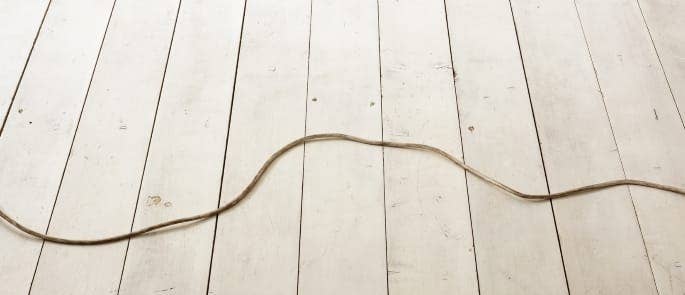
7 tips for preventing trip hazards:
Design of premises: avoid single steps and sudden changes in floor level, but if unavoidable clearly highlight them with signage. Ensure there are numerous plug sockets so cables don’t need to be trailed across the floor.
Installing flooring: carpeting and other materials should be installed properly so there are no bumps or areas that are not level. Report areas where carpeting or lino/laminate has worn down and become uneven.
Trailing cables: plug in equipment as close to where it needs to be as possible. For stationary equipment, if trailing cables are unavoidable use cable tidies and cover strips.
Organise work activities: prevent rushing or overcrowding, ensure employees know how to use equipment safely, and restrict access to areas where temporary trailing cables are unavoidable.
Good housekeeping: report mats or carpeting with curled edges or fraying, keep equipment in suitable storage spaces, clear obstacles away from walkways and stairways, and dispose of/recycle rubbish on the premises.
Manual handling: employees must use proper manual handling techniques, and manual handling activities must be organised to ensure safety. A person carrying a load may not see an obstacle and could seriously injure themselves by tripping over it and/or dropping the load on them as they fall.
Lighting: poor or low lighting will prevent people from seeing hazards. Ensure all walkways and rooms are properly lit with natural and/or artificial light.
Control Measures to Prevent Falls
Falls occur when someone is working above ground level and loses their footing, causing them to fall to the ground. This probably makes you think of people working on a ladder or on a roof, but the reality is that many serious or fatal fall injuries are from falls below head height. Sometimes all it takes is hitting your head hard or landing on a limb at a bad angle to incur a serious injury.
Fall hazards need to be taken into serious consideration. Falls are the single biggest cause of workplace fatalities and are one of the main causes of major injuries.
Hazards may be created by:
- Working on a ladder incorrectly or using one that is not stable.
- Working on a mobile elevated work platform (MEWP) that is not safe for use.
- Working close to an opening, hole in the ground, or excavation site.
- Working on scaffolding or the back of a truck unsafely.
- Not using safety gear when working at height, e.g. harnesses.
- Using inappropriate platforms for accessing heights, e.g. chairs and tables.
- Surrounding hazards, e.g. high winds, overhead power lines, and other at-height obstructions that can throw off a person’s balance.
Fall hazards may also be indirect. For example: slip and trip hazards at height puts a person at risk of falling even if they are doing everything else right, as does faulty equipment that could cause an electric shock and make the person suddenly jerk backwards.
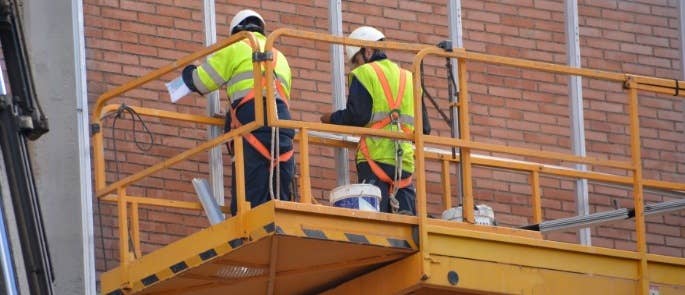
8 tips for preventing fall hazards:
Safety equipment: use airbags and safety nets below at-height work areas and ensure people are equipped with fall arrest harnesses. Use scaffolding, podium steps, and MEWPs where needed (equipment used for lifting people must adhere to regulations. Check out our LOLER Inspection Checklist).
Ladder safety: only use ladders and stepladders for up to 30 minutes and always rest them on a firm, level surface. Do not lift more than 10kg up a ladder, do not overreach, and do not use the top 3 rungs and platform. Furthermore, make sure the ladder is leaned against a solid, stable surface and locking devices are fully engaged.
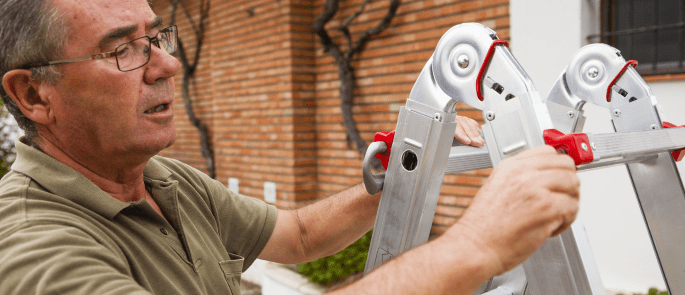
Good work practices: do not use any unsuitable platforms for accessing heights, e.g. a chair. Always use a proper ladder and follow safe procedures.
Instruction and training: follow all instruction and training provided for working at height safely. Use your initiative: discontinue work activities if conditions are evidently unsafe, e.g. high winds or an unstable ladder.
Barriers: when working at height or near excavation sites, barriers must be erected or already in place to prevent people from falling, i.e. guards on scaffolding and MEWPs and fences around holes in the ground.
Space: ensure there is plenty of open space around the area when working at height: each platform requires a minimum amount of space. Having to duck or twist will increase the risk of losing footing and falling.
Equipment maintenance: ensure that equipment used for working at height, e.g. MEWPs and ladders, is installed safely, fully operational, and free of issues. Carry out pre-use checks on equipment before using it.
Prevent other hazards: eliminate slip and trip hazards, as well as risks of electrocution by ensuring that equipment is free of faults.
Slips, Trips and Falls Risk Assessments
Employers must carry out a general risk assessment and working at height risk assessment to ensure that no hazards are being posed to people during work activities. Risk assessments for working at height is particularly vital; circumstances could easily change between activities and put people at risk of falling.
General risk assessments enable employers to spot slip and trip hazards that may be present on the premises and put in place control and preventative measures – like those listed throughout this article – so no one has to suffer injuries from easily-preventable risks while at work.
Further Resources:
- Common Office Injuries and How to Prevent Them
- Slips, Trips and Falls Quiz
- What are the Roles and Responsibilities of a Health and Safety Manager?
- Working at Height Risk Assessment


